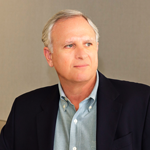
In early 2014, your company announced new partnerships, acquisitions, and services. As the company expands, what’s most important from a talent perspective?
Lynn Jolliffe: We’re building and expanding global business units, and it’s important to move with the pace of technology. We have found good opportunities to build on our traditional distribution and go after higher-margin businesses and more opportunities to expand the business through cloud services, mobility, and other initiatives. For HR, that means we have to ensure we have the right talent in place at the right time. To do that, we have to work closely with business leaders to determine how and where the company will grow so we can identify and fill talent gaps.
What guides that decision-making process?
Jolliffe: It’s a “build or buy” mentality. In some places, we’ll focus on internal resources and HR will make sure those ingredients are all in place. For other areas, especially new ones, it becomes more of a buy. We’re going out and finding the right people and then bringing them into the company.
How do you maintain the overall culture during this process?
Jolliffe: A few years ago, we started to look at the culture we wanted to create. We wanted to become more innovative and customer centered. That’s when we started to make changes in development, training, and messaging to get our culture where we wanted it. Acquisitions are helping us push forward that innovation. They help our current associates see that we are living the message of being innovative and agile. We’re bringing in the right pieces and blending legacy and new businesses together.
How will you know the plan is working?
Jolliffe: We’re seeing the outcomes in how business is done. Some people felt that our processes were too slow or bureaucratic. We took that feedback to specific departments and challenged them to offer suggestions. Many came back to us with changes through which we’ve removed certain steps, clarified roles and responsibilities, streamlined actions, and pushed accountability. From a talent perspective, this helps us retain associates because we’re giving them autonomy and authority.
And what about new employees? What are you doing to recruit?
Jolliffe: Our company needs savvy tech users, so we’ve turned to LinkedIn and other social media outlets more. We’ve also developed new branding that explains the company better and takes people through our culture. Internally, we work closely with managers to help them understand the tools and techniques we have to onboard associates, and we have lots of learning opportunities. We do this in one-hour shots so that we are delivering training to people when and how they need it. We make sure it’s good content they can use immediately.
What happens after onboarding?
Jolliffe: As the company grows around the world, we’re working hard to identify business needs so we can respond accordingly. That means we need to have different training programs that target people at all levels of the organization. We have development centers, a GM [general management] training program, and a leadership academy for senior level executives. We assess where we need to be, review the talent that we have, and develop plans for the future.
How do you review and manage talent on a regular basis?
Jolliffe: We do this once a year formally and more frequently informally. We assess all senior executives worldwide with very good transparency through all segments of business. We create development plans for them, and we make sure we monitor and follow up. As we put together strategic plans and work with business-unit leaders, we ask what skills and talents they need, what they have, and where the gaps are. We try to stay ahead of the game to know what skills and talent we need to go hire. We work closely with business leaders to think not only about revenue and culture, but how to get there.
One important thing we’ve done is eliminate formal written reviews in favor of one-on-one quarterly reviews and an end of the year assessment. There should be ongoing dialogues about performance. That’s much better than relying on an insufficient paper form that’s more of a chore than a review. Let’s stop worrying about one piece of paper at the end of the year and start talking about development and opportunities throughout the year.
What’s most important moving forward?
Jolliffe: Working with our executives to really understand the business strategy and make sure that everything we do is aligned with it. We stop periodically to take another look, and if the business strategy has changed, then HR must evolve with it. We challenge ourselves to get better year after year. The business wants to get closer to the customer, and in HR, we think of ourselves as a business group with the business as our customer. We make sure we serve them well because that’s how we’ll succeed together.

